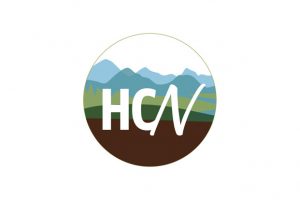GET BACK ON TRACK THIS NEW YEAR
2023 has come to an end. Hopefully you can look back on it with some happy memories, accomplished work and adventures in your pocket. With the new year ahead, it’s time to put the focus back on you and start next year off right.
Let’s discuss one of the most common injuries. Back pain. According to a 2016 systemic review of the literature (Pubmed – Bloxam et al), 60-80% of adults in western countries are likely to experience lower back pain (LBP). It is associated with increasing medical expenditure, work absence, and is the most common musculoskeletal condition.
There are many causes of LBP, including other co-morbidities, lifestyle and genetics. A global study in 2010 (Lancet, Vos T et al.) looked at “years lived with disability” from all causes. Among the top 10 leading causes of disability were Diabetes, migraines, anxiety, depression and the #1 cause of global disability…lower back pain.
The lower back is an area of the body containing interconnected and overlapping elements. There are structures such as tendons, muscles, spinal joints, spinal discs, and sensitive nerves that travel from the lumbar spine down the lower extremities. While lower back pain is common, the symptoms may vary greatly. A seemingly simple muscle strain may cause severe back spasms, while a degenerative disc issue might only cause mild discomfort. Sometimes, a disc or joint injury in the back, can manifest as lower leg pain, numbness or weakness and patients report very little pain in the lower back.
Typically a muscle or ligament strain involves severe or aching pain in the lower back after activity, repetitive bending, or lifting a heavy object. This may cause difficulty moving, bending, walking or standing. Pain may move into the butt or groin region, but rarely travels down the leg. The lower back area is often described as dull, achy and stiff. Modified activity, gentle stretching and lower back exercises are often helpful.
A herniated disc occurs when the fibers surrounding the lumbar disc are injured and the gelatinous disc material inside bulges out onto the nerve root. Pain is typically ongoing and may be worse in the leg and foot than the lower back. Pain may be more predominant on one side and worsened with sitting or standing, with some relief when walking. Pain is often described as burning, tingling, numbness and may be accompanied by weakness in the leg. Sciatica is a symptom that describes the pain felt down one’s leg. When the nerve is compressed in the lower back, pain and numbness is felt in the buttocks, leg or foot. Sciatic pain may be brought on by a herniated disc putting pressure on the nerve, or the narrowed joint space encroaching on the nerve tissue.
Degenerative disc disease can be brought on by many factors. There is a correlation with genetics, age related changes, and traumatic causes. It is estimated that at least
30% of people aged 30-50 years old have some degree of normal disc degeneration. This may or may not come with any signs or symptoms. As we age, our tissues change, have less water content and collagen. The thickness of a disc can lessen, narrowing the joint space and potentially irritate surrounding nerves and muscles.
Mechanical changes also occur, as the disc cannot absorb the stress on the spine effectively, the resulting movement changes put stress on other joints and muscles.
If your low back pain is accompanied by issues such as unexplained weight loss, significant leg weakness, sudden bowel or bladder incontinence, or severe abdominal pain it is important to seek immediate urgent care.
For most people, these lower back issues can be successfully treated conservatively with physiotherapy, strength, flexibility, aerobic exercises and modified activity. The first line of action is usually to avoid aggravating positions, typically bending and twisting. An individualized exercise program is key to returning you to activities and preventing further damage. Body awareness and core stability exercises can help to awaken muscles that stabilize the spine. Stretching may focus on the hip flexors, quadriceps, hip muscles and back muscles. Use caution with stretching the hamstrings as the sciatic nerve runs along the back of the leg and if that structure is irritated, stretching can aggravate those symptoms. Aerobic activity, such as walking, increases blood flow and nutrients to the soft tissue structures in the back. This will stimulate the healing process and reduce stiffness. When we move and exercise, endorphins are released, a chemical in the brain associated with pain control and general well-being.
The team at Bragg Creek Physiotherapy are here to help you start next year off right! We wish you all the best enjoying the holiday season with friends and family. Happy Holidays!
Jennifer Gordon (BSc.PT, BA Kin, AFCI)
Physiotherapist – Bragg Creek Physiotherapy
www.braggcreekphysio.com

























